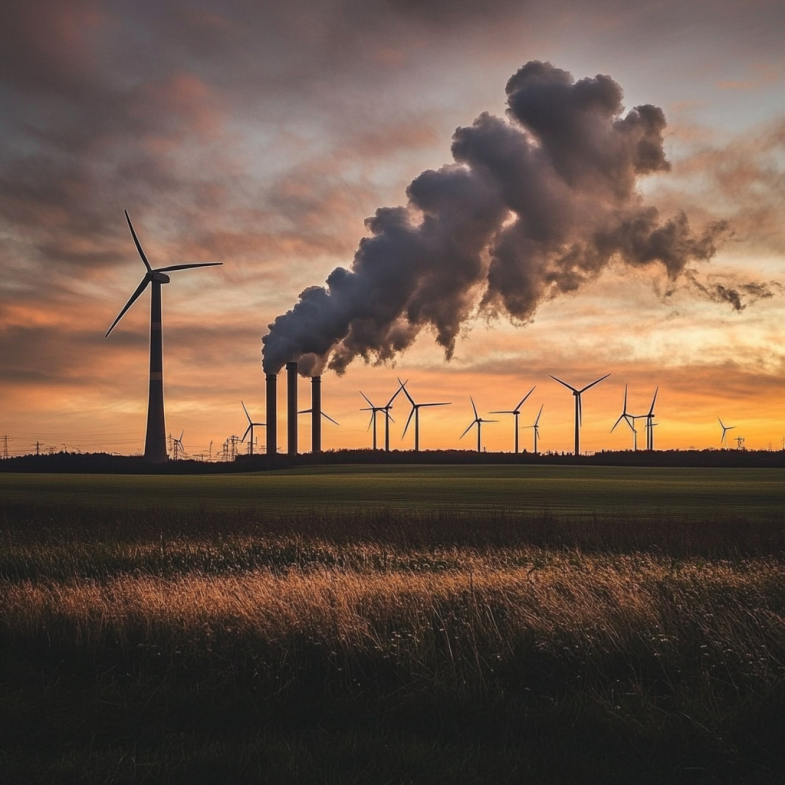With the growth of the population and the development of industry, energy consumption is constantly increasing. However, traditional energy sources such as coal, oil and natural gas have limited reserves and cause serious damage to the environment. In this regard, more and more attention is paid to renewable energy sources (RES), such as solar, wind and hydropower. These technologies allow the production of clean energy that does not deplete natural resources and minimizes the impact on the environment. In this article, we will consider the main types of RES and their interaction with new technologies.
Chapter 1: What are Renewable Energy Sources?
Definition of RES
Renewable energy sources (RES) are sources that can be used indefinitely without depleting their reserves. The main types of RES include solar, wind, hydropower, as well as biofuels and geothermal energy. These energy sources are environmentally friendly and help reduce greenhouse gas emissions, which is especially important in the context of global climate change.
Advantages of Renewable Energy Sources
The main advantages of renewable energy sources are:
Cleanliness: Renewable energy sources do not produce harmful emissions such as carbon dioxide, which is one of the main causes of global warming.
Sustainability: Renewable energy sources can be used indefinitely, as their reserves are virtually unlimited.
Decentralization: Renewable energy sources allow energy to be produced locally, which reduces dependence on centralized energy systems and increases energy security.
Chapter 2: Solar Energy
How Solar Panels Work
Solar panels convert solar energy into electricity using the photovoltaic effect. When light particles (photons) hit a semiconductor material, they release electrons, creating an electric current. Modern solar panels can achieve efficiencies of up to 20%, allowing them to produce significant amounts of energy even in low light conditions.
Advantages of Solar Energy
One of the main advantages of solar energy is its availability. The sun shines every day, and its energy can be used almost anywhere on the planet. In addition, solar panels can be installed on rooftops, making them an ideal strategy for decentralized energy production.
Disadvantages of Solar Energy
The main disadvantage of solar energy is its dependence on weather conditions and time of day. On cloudy days or at night, energy production is significantly reduced. In addition, installing solar panels requires a significant investment, although their cost is gradually decreasing due to technological innovations.
Chapter 3: Wind Energy
How Wind Turbines Work
Wind turbines convert the kinetic energy of the wind into electrical energy using generators. When the turbine blades rotate due to the wind, they turn the rotor of the generator, which produces electricity. Modern wind turbines can reach a power of up to several megawatts, which allows them to produce large amounts of energy.
Advantages of Wind Energy
One of the main advantages of wind energy is its environmental friendliness. Wind turbines do not produce harmful emissions and can operate around the clock if there is wind. In addition, wind energy can be used in remote areas where there is no possibility of connecting to centralized power supply systems.
Disadvantages of Wind Energy
The main disadvantage of wind energy is its dependence on weather conditions. If there is no wind, the turbines will not be able to produce energy. In addition, installing wind turbines requires significant investment and takes up a lot of space, which can cause conflicts with local communities and environmental organizations.
Chapter 4: Hydropower
How Hydroelectric Power Plants Work
Hydroelectric power plants (HPPs) use the energy of water to produce electricity. Water passing through turbines turns the rotor of a generator, which produces electricity. Hydroelectric power plants can have different capacities, from small stations on rivers to large dams, such as the Three Gorges Dam in China.
Advantages of hydropower
One of the main advantages of hydropower is its stability. Unlike solar and wind power, hydroelectric power plants can produce energy around the clock if there is enough water. In addition, hydropower is environmentally friendly and can be used to regulate the water level in rivers and prevent floods.
Disadvantages of hydropower
The main disadvantage of hydropower is its impact on the environment. The construction of dams can change the natural course of rivers, which leads to the destruction of ecosystems and the resettlement of local populations. In addition, the construction of hydroelectric power plants requires significant financial and time resources, which limits their use in some regions.
Chapter 5: Interaction of RES with Emerging Technologies Smart Grids
Smart Grids are one of the key elements of integrating RES into existing power systems. These networks use advanced technologies to monitor and control energy production and distribution in real time. This allows RES to optimize their operation and ensure reliable power supply even when energy production fluctuates.
Energy Storage
Energy storage is an important component for the successful implementation of RES. Since solar and wind energy are dependent on weather conditions, it is necessary to be able to store excess energy for use during periods of low production. Modern technologies such as lithium-ion batteries and hydrogen-based energy storage systems can effectively address this issue.
Integration with other technologies
RES can be integrated with other technologies such as artificial intelligence (AI) and the Internet of Things (IoT). AI can be used to predict energy production and optimize the operation of renewable energy sources, and IoT allows monitoring the condition of equipment and promptly identifying problems. This helps to improve the efficiency and reliability of renewable energy sources.
Renewable energy sources play an important role in shaping the energy of the future. They allow producing clean energy, minimizing the impact on the environment and ensuring sustainable development. Solar, wind and hydropower are already actively used in many countries around the world, and new technologies such as smart grids and energy storage systems make them even more efficient and reliable. However, for the full implementation of renewable energy sources, it is necessary to solve a number of technical and economic problems, such as the high cost of equipment and the impact on the environment.


